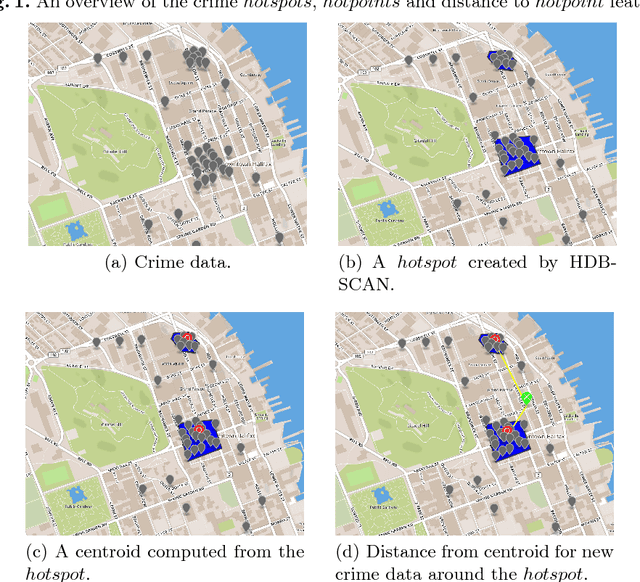Fateha Khanam Bappee
Analyzing the Impact of Foursquare and Streetlight Data with Human Demographics on Future Crime Prediction
Jun 13, 2020



Abstract:Finding the factors contributing to criminal activities and their consequences is essential to improve quantitative crime research. To respond to this concern, we examine an extensive set of features from different perspectives and explanations. Our study aims to build data-driven models for predicting future crime occurrences. In this paper, we propose the use of streetlight infrastructure and Foursquare data along with demographic characteristics for improving future crime incident prediction. We evaluate the classification performance based on various feature combinations as well as with the baseline model. Our proposed model was tested on each smallest geographic region in Halifax, Canada. Our findings demonstrate the effectiveness of integrating diverse sources of data to gain satisfactory classification performance.
Predicting Crime Using Spatial Features
Mar 12, 2018

Abstract:Our study aims to build a machine learning model for crime prediction using geospatial features for different categories of crime. The reverse geocoding technique is applied to retrieve open street map (OSM) spatial data. This study also proposes finding hotpoints extracted from crime hotspots area found by Hierarchical Density-Based Spatial Clustering of Applications with Noise (HDBSCAN). A spatial distance feature is then computed based on the position of different hotpoints for various types of crime and this value is used as a feature for classifiers. We test the engineered features in crime data from Royal Canadian Mounted Police of Halifax, NS. We observed a significant performance improvement in crime prediction using the new generated spatial features.
 Add to Chrome
Add to Chrome Add to Firefox
Add to Firefox Add to Edge
Add to Edge